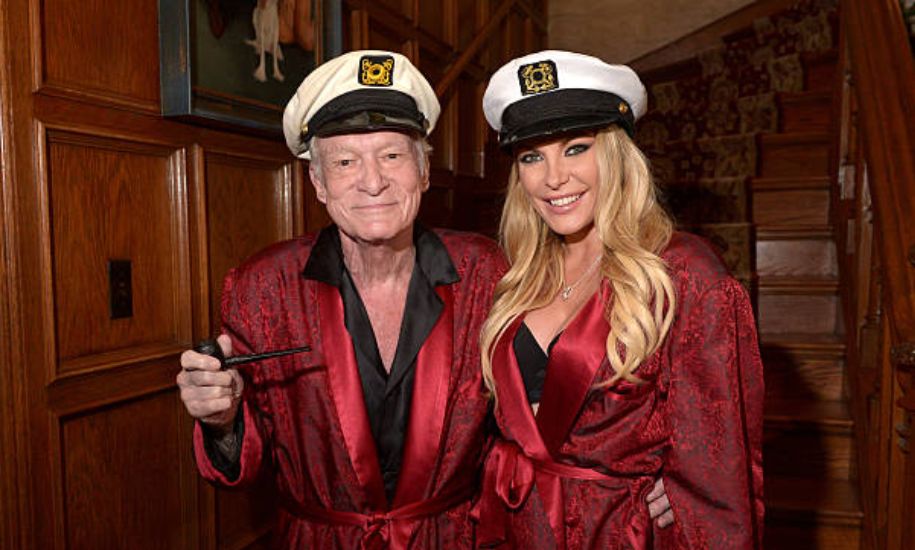Hugh Hefner: The Man Behind the Playboy Legacy

Hugh Marston Hefner was an American magazine publisher, entrepreneur, and cultural icon, best known as the founder of Playboy magazine. Born on April 9, 1926, in Chicago, Illinois, Hefner transformed a small idea into one of the most recognizable lifestyle brands in the world. He was not only a businessman but also a media pioneer who shaped modern attitudes toward sexuality, entertainment, and personal freedom.
Before becoming a global symbol of luxury and hedonism, Hefner’s beginnings were modest. His father, Glenn Lucius Hefner, was an accountant, and his mother, Grace Caroline, was a teacher. Raised in a conservative Methodist household, he rebelled against traditional American norms — a rebellion that would define his professional and personal life.
After serving in the U.S. Army during World War II, Hefner attended the University of Illinois, where he earned a bachelor’s degree in psychology. He briefly studied sociology before deciding to venture into publishing. In 1953, he launched the first issue of Playboy magazine, featuring Marilyn Monroe on the cover — a bold move that would forever change American media.
The Rise of Playboy and Cultural Influence
The first issue of Playboy was produced from Hefner’s kitchen table with a borrowed sum of $600. It sold over 50,000 copies, setting the stage for what would become a global phenomenon. Hefner’s vision was simple yet revolutionary — to create a magazine that combined intelligent journalism, interviews, fiction, humor, and, of course, sensual imagery.
Throughout the 1950s and 1960s, Playboy became synonymous with sophistication and liberation. It wasn’t just about nude photography; it was about lifestyle — fine dining, luxury living, high fashion, and open discussion about sex and politics. Hefner’s interviews with figures such as Martin Luther King Jr., Malcolm X, and John Lennon gave the magazine credibility and cultural weight.
At the height of its success, Playboy wasn’t just a magazine. It was a global empire — including nightclubs, TV shows, merchandise, and the legendary Playboy Mansion. Hefner himself became a brand: the man in silk pajamas surrounded by glamour and mystery.
Age and Lifespan
Hugh Hefner lived to the age of 91. He was born on April 9, 1926, and passed away on September 27, 2017, in Los Angeles, California. His death marked the end of an era, closing the chapter on one of the most controversial yet fascinating lives in entertainment history.
Despite his age, Hefner maintained a youthful persona throughout his life. He was rarely seen without his iconic silk robe and smoking pipe, and he hosted some of the most famous parties in Hollywood. He once said, “Life is too short to be living someone else’s dream.” That statement encapsulates his lifelong pursuit of personal freedom and indulgence.
Hugh Hefner’s Net Worth
Hugh Hefner’s financial story mirrors the rise and fall of traditional print media. In his prime, Hefner’s empire was worth hundreds of millions of dollars. During the 1970s, Playboy magazine was selling millions of copies per month and generating enormous revenue.
At the time of his death in 2017, Hefner’s net worth was estimated at around $50 million. While this figure was far less than his peak wealth, it still represented a lifetime of business acumen and cultural dominance. His assets included shares in Playboy Enterprises and his portion of the famous Playboy Mansion, which he sold under an agreement that allowed him to live there until his death.
After his passing, reports indicated that his estate was divided among his four children and his wife, Crystal Hefner. His will reportedly included a morality clause — stipulating that any heir who was found abusing drugs or alcohol would lose their inheritance.
Though his wealth diminished compared to earlier decades, Hefner’s greatest asset was his brand — a cultural symbol that blended sensuality, luxury, and rebellion. Even in today’s digital world, Playboy remains one of the most recognized names in publishing history.
Marriages and Relationships
Hefner’s personal life was as eventful as his career. Over his lifetime, he was married three times and was romantically involved with numerous women, often surrounded by multiple companions at the Playboy Mansion.
First Marriage – Mildred “Millie” Williams
Hugh Hefner married Millie Williams in 1949, long before his fame. The couple had two children together, Christie and David Hefner. Their marriage ended in 1959, following Hefner’s growing involvement in the entertainment industry and lifestyle that would later define him.
Second Marriage – Kimberley Conrad
In 1989, Hefner married Kimberley Conrad, a former Playboy Playmate of the Year who was 36 years his junior. Their union produced two sons, Marston and Cooper. Despite their separation in 1998, they remained legally married until 2010, largely to provide stability for their children.
Third Marriage – Crystal Harris
Hefner’s third and final marriage was to model Crystal Harris in 2012. She was 26 years old at the time, while Hefner was 86. Despite public skepticism about the age gap, the marriage lasted until his death in 2017. Crystal described Hefner as a kind, romantic, and gentle man who treated her with respect and care.
Hugh Hefner and Holly Madison
Among Hefner’s many relationships, his connection with Holly Madison remains one of the most talked-about. Holly Madison, a model and TV personality, became one of Hefner’s girlfriends in the early 2000s and starred alongside him in the reality television series The Girls Next Door.
The show, which aired from 2005 to 2008, gave the world a glimpse into life at the Playboy Mansion and turned Madison into a household name. Though she appeared glamorous and content, she later revealed that her experience was far from perfect. In her memoir, Madison spoke openly about the emotional challenges and strict rules of living in Hefner’s world.
Despite their breakup in 2008, Madison acknowledged Hefner’s influence on her career and the complex nature of their relationship. While she did not inherit from his estate, her years at the mansion remain one of the most publicly documented chapters of Hefner’s personal life.
Hugh Hefner’s Children
Hugh Hefner had four children from his first two marriages — two daughters and two sons — all of whom led unique paths, with varying levels of involvement in the Playboy empire.
- Christie Hefner (born 1952) – His eldest child and only daughter, Christie became the CEO of Playboy Enterprises from 1988 to 2009. She modernized the brand and played a key role in steering it through challenging decades.
- David Hefner (born 1955) – His second child, David, chose to live a private life outside the Playboy spotlight and pursued a career in media and technology.
- Marston Hefner (born 1990) – The first son from his marriage to Kimberley Conrad, Marston briefly pursued modeling and writing. He has spoken occasionally about growing up in a famous household.
- Cooper Hefner (born 1991) – The youngest son, Cooper, followed in his father’s footsteps, serving as Chief Creative Officer for Playboy Enterprises in 2016. He has also served in the U.S. Air Force and continued to build on his father’s legacy.
Hefner’s children represent both continuity and change — carrying elements of their father’s business acumen and creative spirit, but also redefining the family name in more modern, socially conscious ways.
Legacy and Cultural Impact
Hugh Hefner’s legacy is one of complexity. To some, he was a champion of free speech, gender liberation, and artistic expression. To others, he was a symbol of moral decay and the commodification of women. Both views are true in part.
Throughout his career, Hefner used Playboy as a platform to advocate for civil rights, free speech, and progressive ideas. He often published works by leading authors and hosted interviews that discussed politics, philosophy, and sexuality in ways that were ahead of their time.
However, the Playboy lifestyle — with its constant parties and revolving door of models — also drew criticism. Many feminists accused Hefner of objectifying women and promoting unrealistic beauty standards.
Despite these criticisms, there is no denying that Hugh Hefner changed global media and culture. He redefined masculinity, leisure, and sexuality in post-war America. His empire became a symbol of luxury and desire, inspiring decades of magazines, television, and fashion influenced by the Playboy aesthetic.
Upon his death in 2017, Hefner was buried in Westwood Village Memorial Park Cemetery in Los Angeles, beside Marilyn Monroe — the woman who graced the first cover of Playboy. The space had been purchased by Hefner decades earlier, symbolizing his lifelong admiration for Monroe and the world she represented.
Final Thoughts
Hugh Hefner’s story is a tale of ambition, creativity, and controversy. From a young man in Chicago with a dream to a global symbol of sensual sophistication, Hefner built a lifestyle empire that outlived him.
He was a visionary who challenged taboos, yet also a flawed figure whose personal and public lives raised questions about ethics, gender, and power. Whether one sees him as a liberator or as a symbol of excess, there is no denying his place in history.
Hugh Hefner’s influence will continue to echo through pop culture, media, and business for generations. His life reminds us of the thin line between genius and indulgence — and how one man’s vision can redefine an era.
This detailed biography and analysis of Hugh Hefner’s life, career, and relationships is brought to you by fanzineblog — your source for celebrity history, culture, and entertainment insights.

